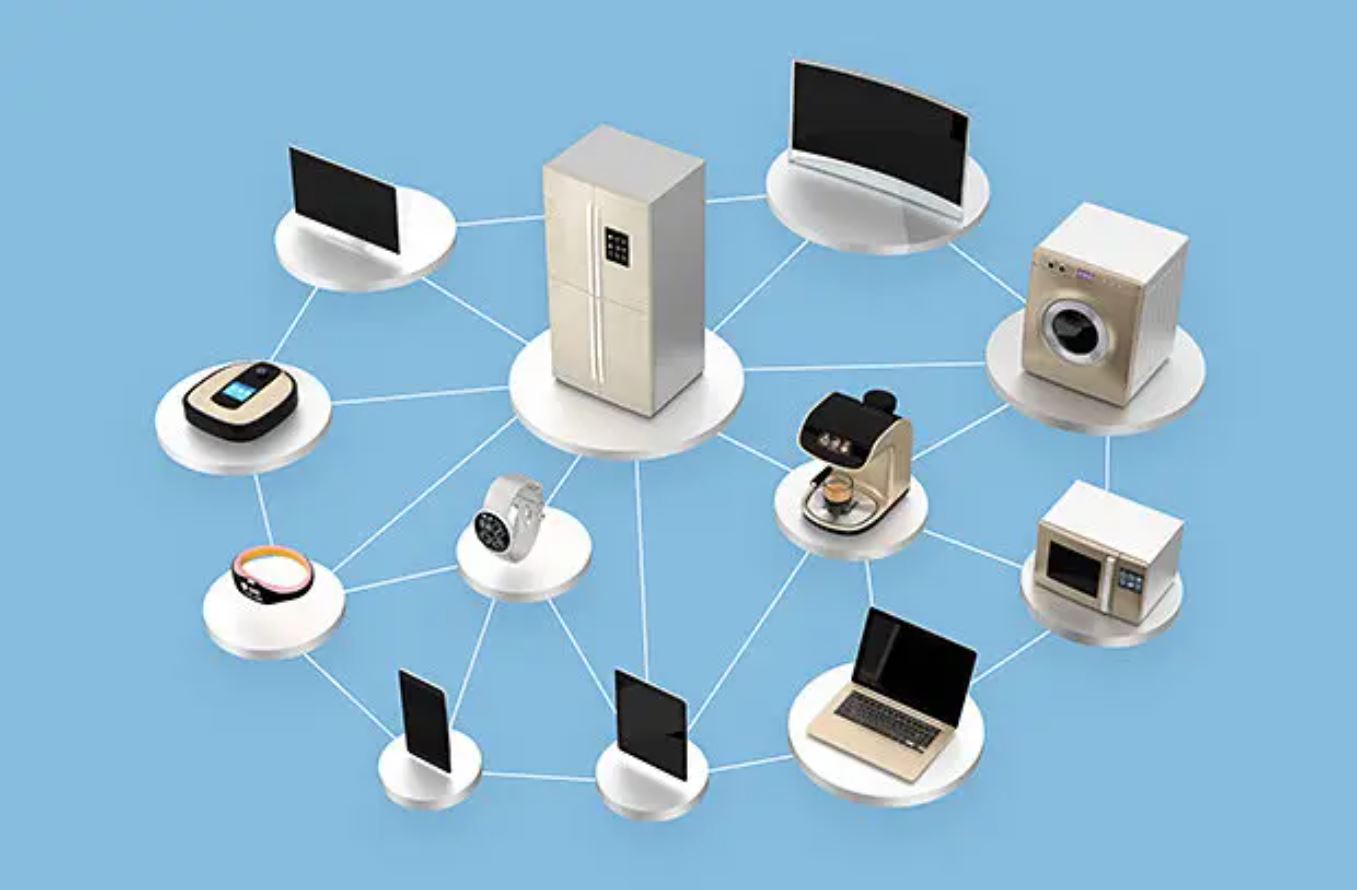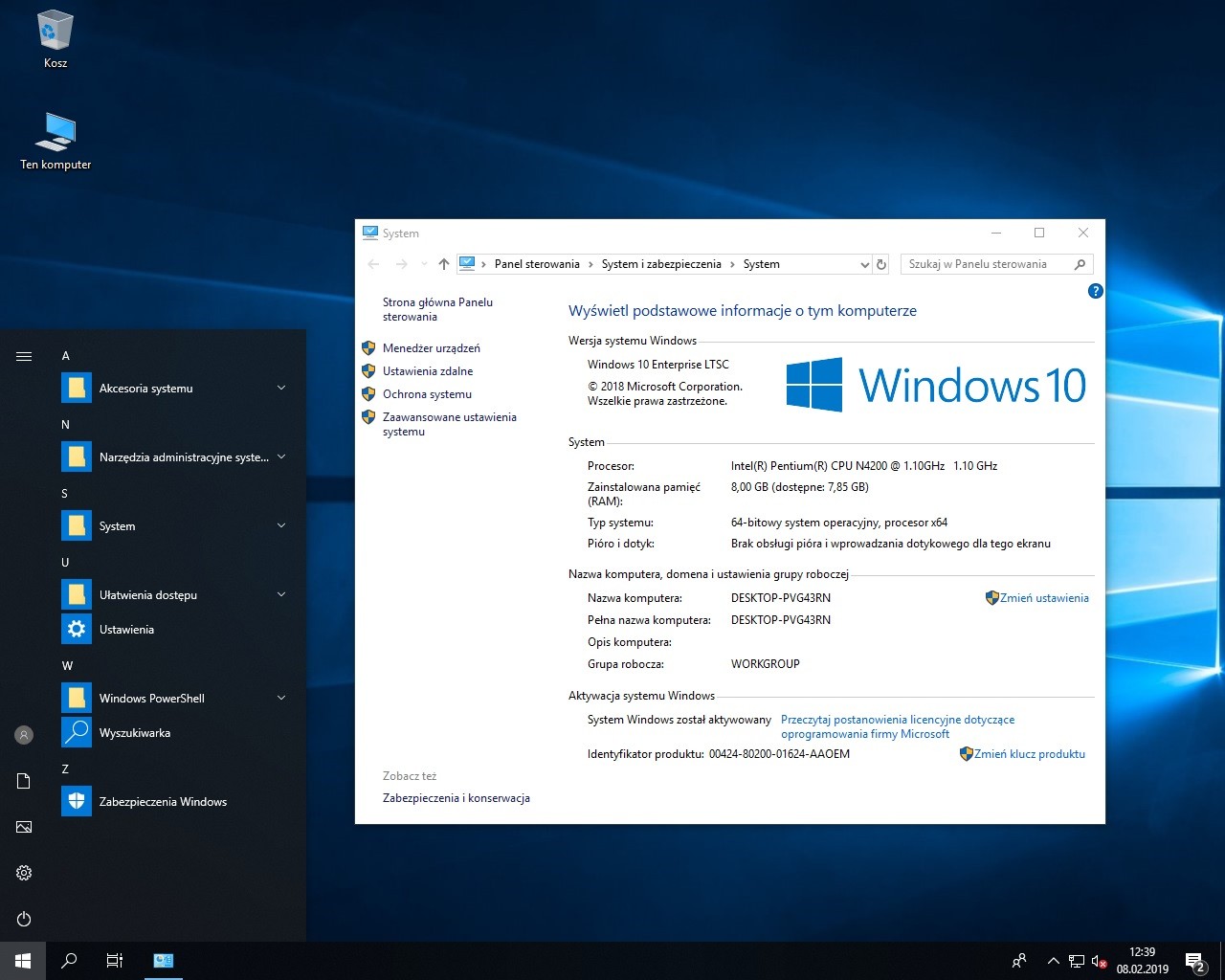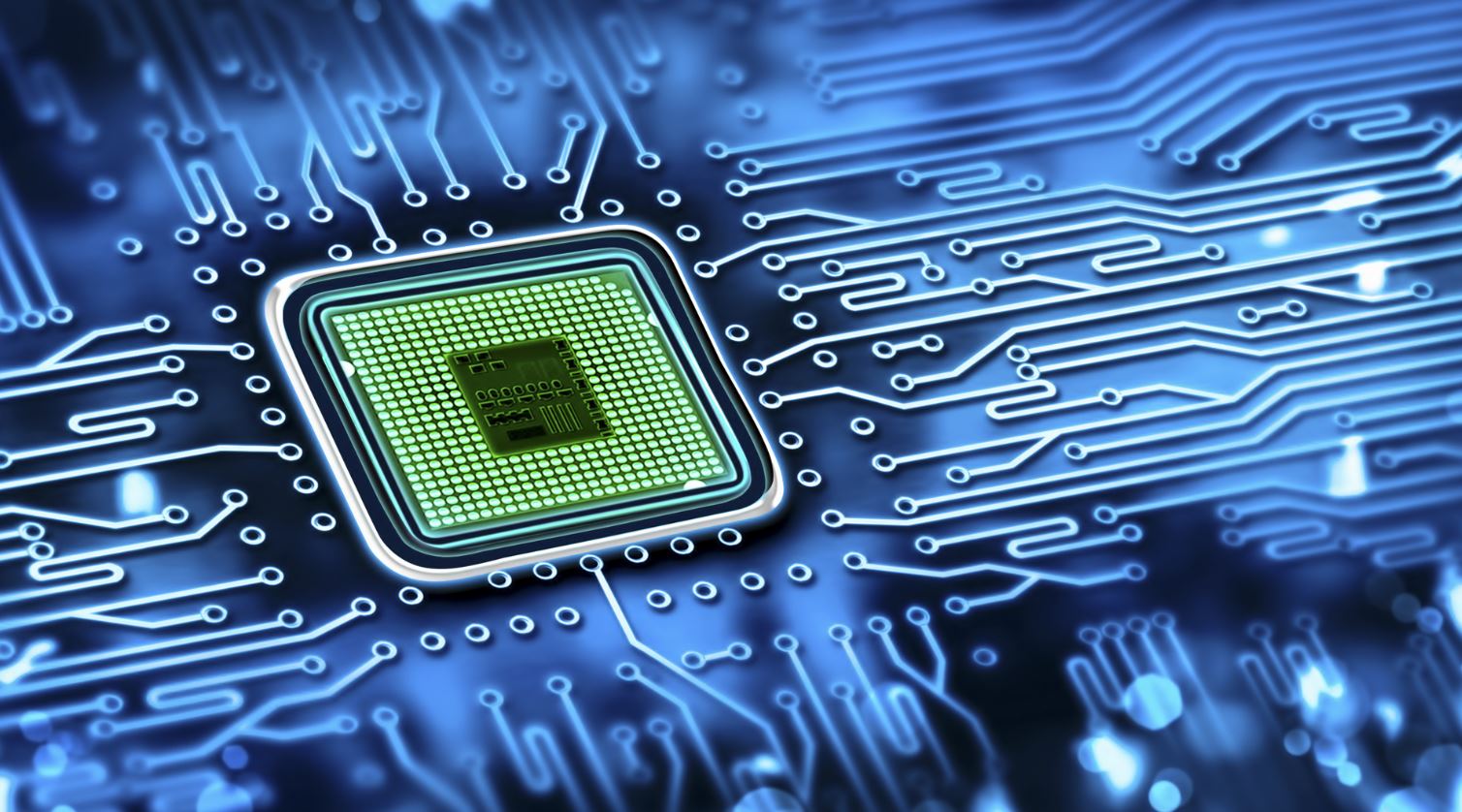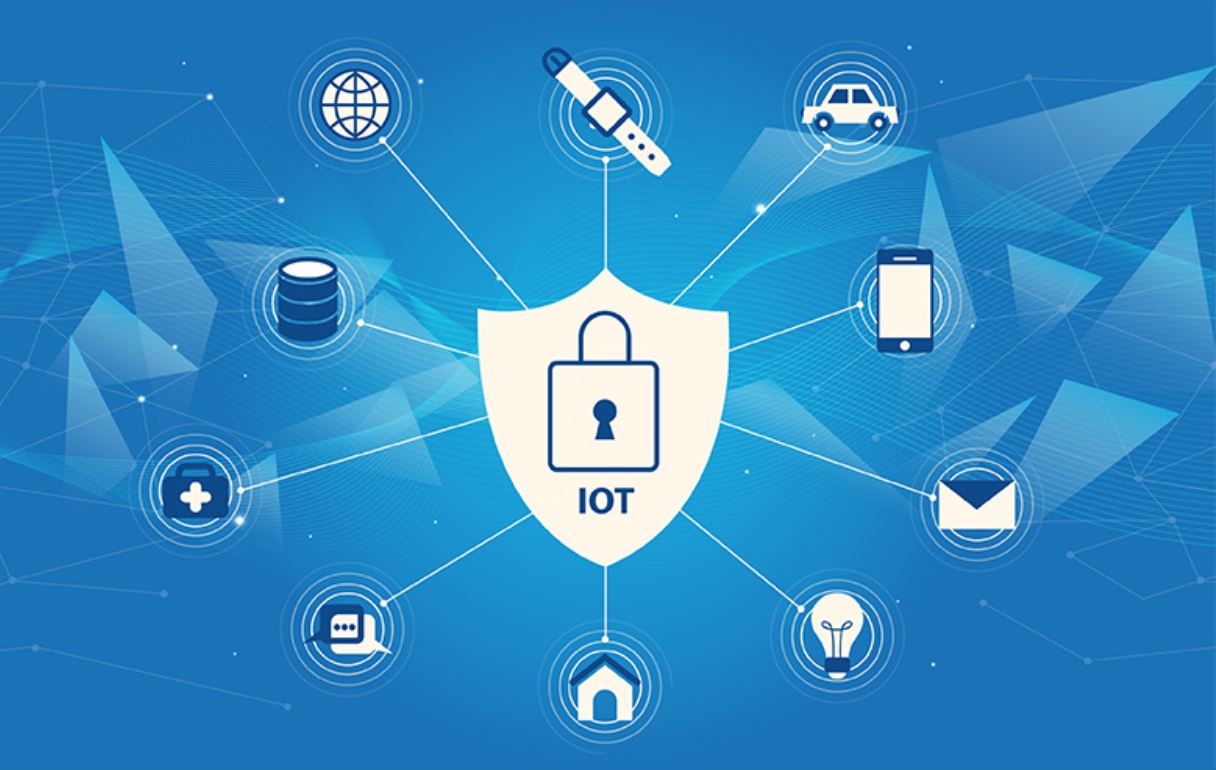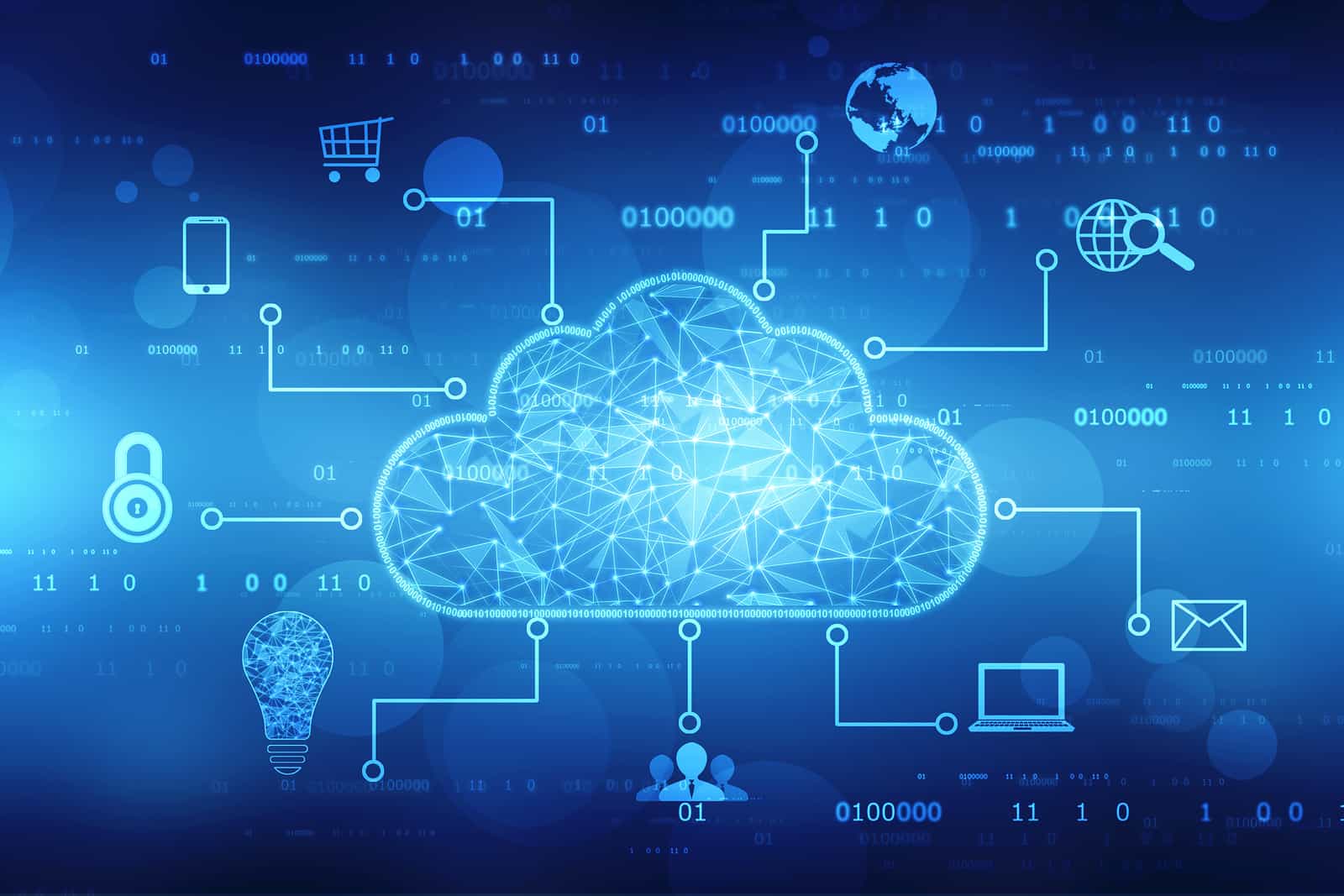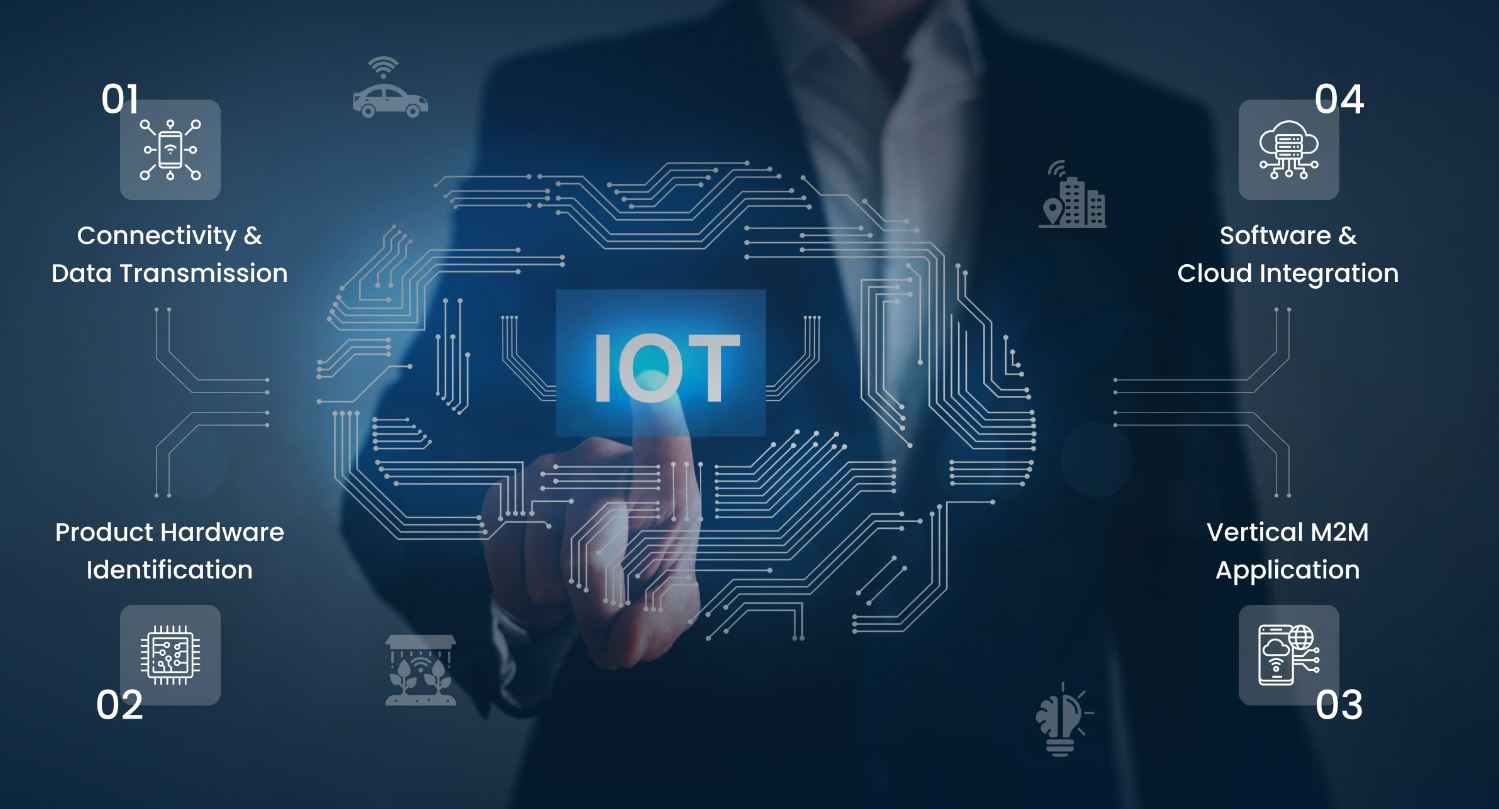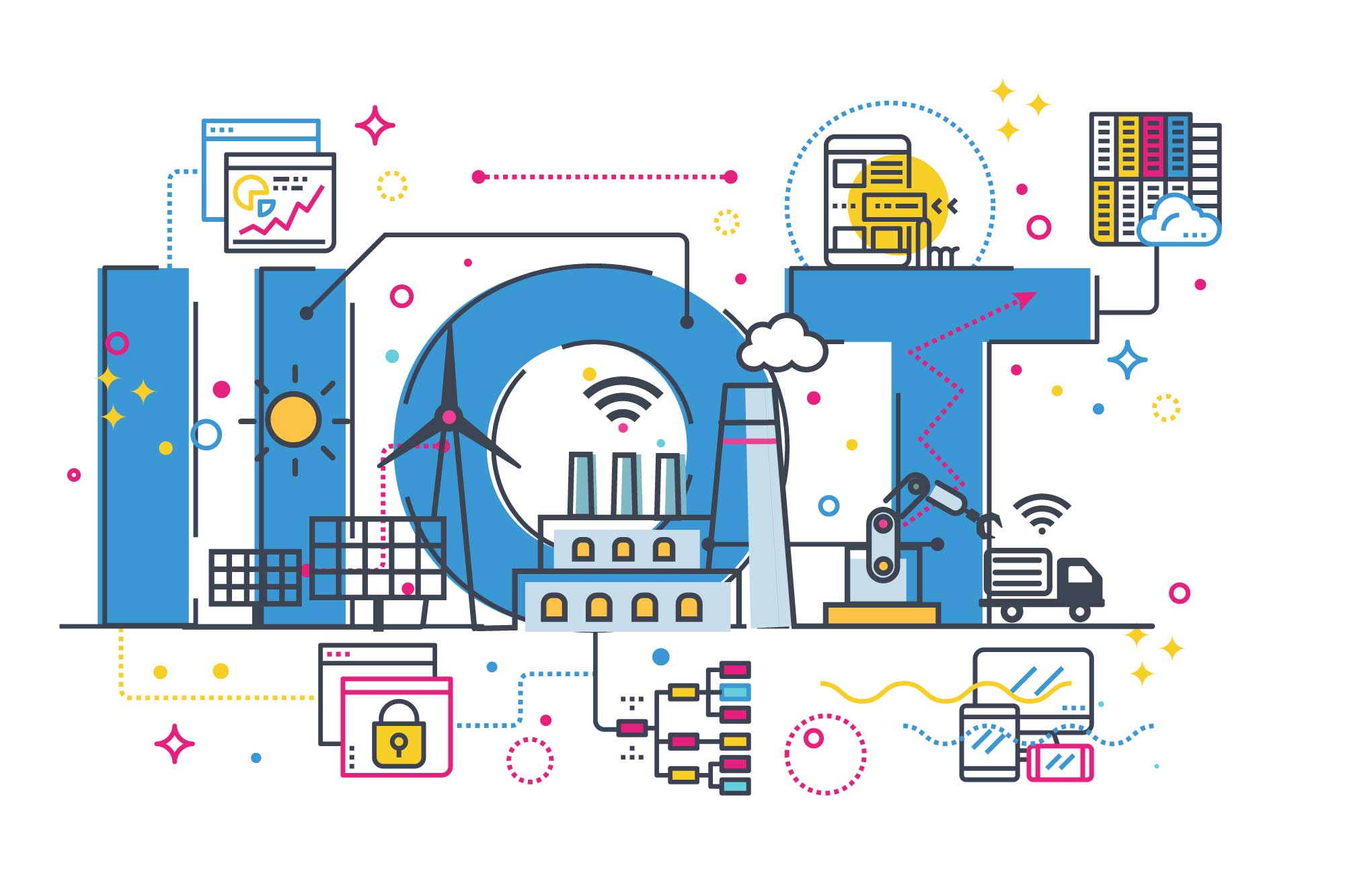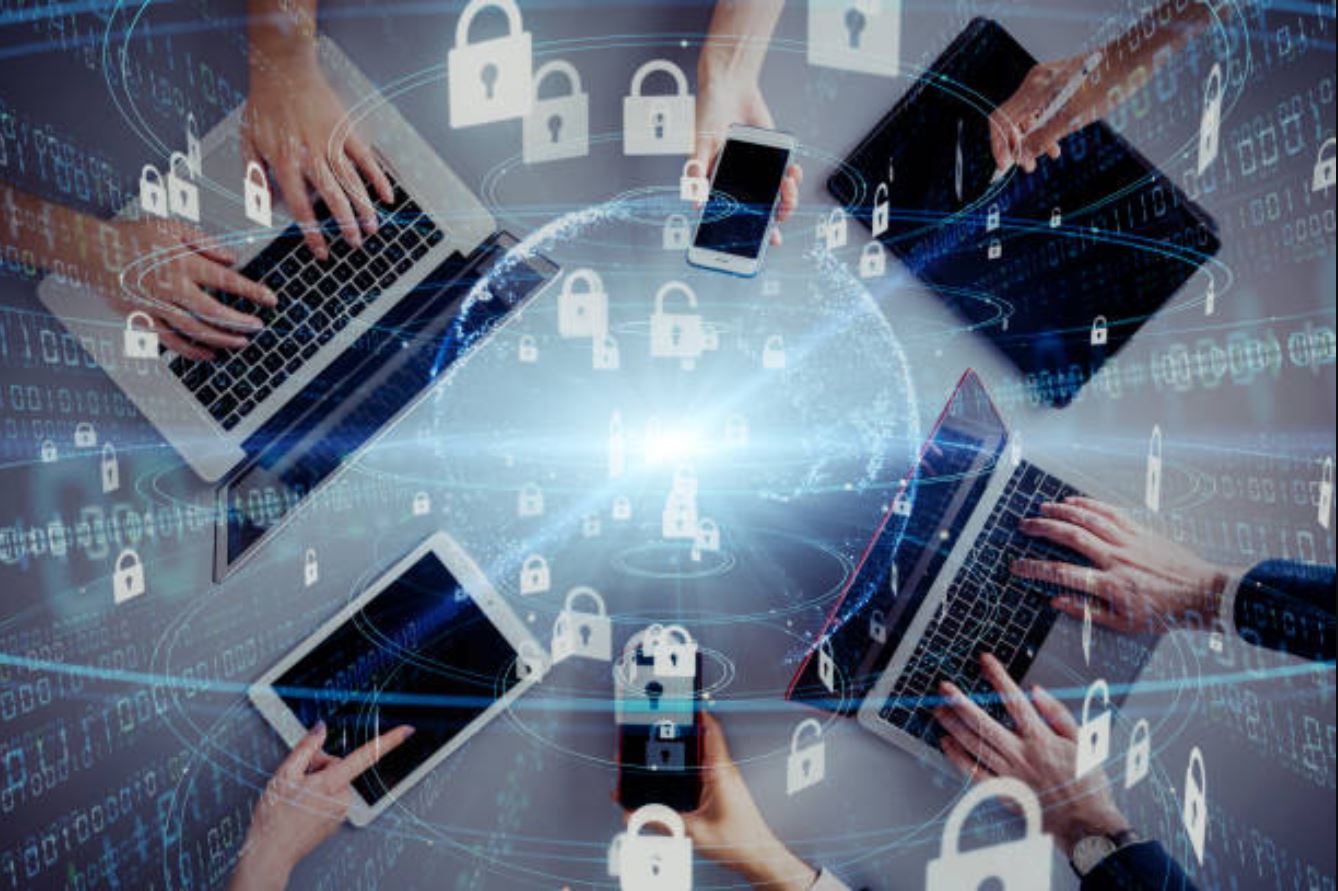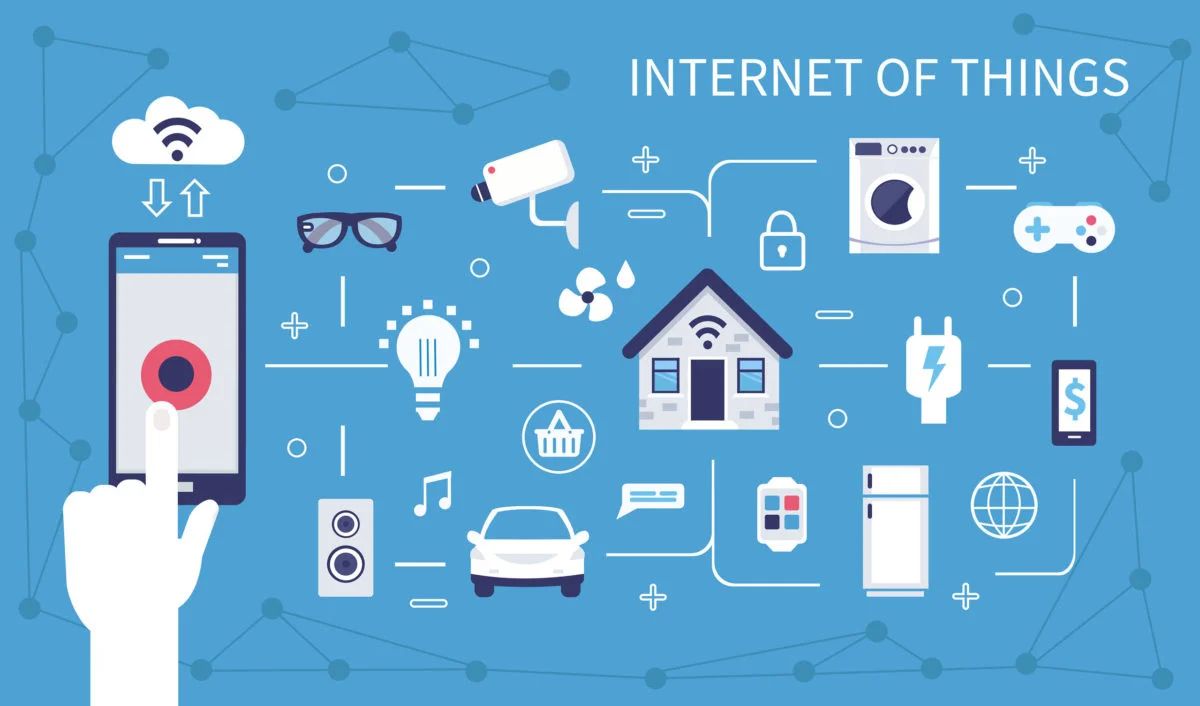Introduction
The Internet of Things (IoT) has rapidly gained prominence as a transformative technology in recent years. With its promise of interconnecting everyday objects and enabling them to exchange information, IoT has the potential to revolutionize various aspects of our lives. From smart homes and cities to industries and healthcare, IoT technology is reshaping the way we live, work, and interact with the world around us.
At its core, IoT is a vast network of connected devices that communicate and collaborate through the internet. These devices, equipped with sensors, actuators, and connectivity capabilities, gather and exchange data, enabling them to make intelligent decisions and perform tasks without human intervention. The advancements in wireless technologies, cloud computing, and artificial intelligence have fueled the proliferation of IoT, driving its expansion into every sector of the economy.
IoT works on the principle of connecting physical objects with the digital world, creating a seamless network of devices that can collect, analyze, and act upon data. These interconnected devices form an ecosystem where data is continuously generated, transmitted, and processed in real-time. The enormous amount of data generated by IoT devices is then processed and analyzed using advanced analytics techniques to derive meaningful insights and drive smart decision-making.
This technology has ushered in a new era of efficiency, convenience, and automation. From smart homes that can adjust temperature and lighting based on occupancy and weather conditions, to smart cities that monitor traffic flow and optimize resource allocation, IoT has the potential to optimize various processes and enhance our overall quality of life.
Furthermore, IoT has also gained traction in industries such as manufacturing, agriculture, and healthcare. It enables businesses to monitor and control operations remotely, optimize resource usage, automate processes, and ensure the highest level of productivity and efficiency. In healthcare, IoT devices can collect patient data, monitor vital signs, and enable remote diagnosis, improving patient outcomes and transforming the delivery of healthcare services.
However, despite its tremendous potential, IoT also presents several challenges and concerns. Security and privacy are critical concerns, as more devices become connected and vulnerable to cyberattacks. The sheer volume of data generated by IoT devices also poses challenges in terms of data storage, processing, and analysis. Additionally, there are concerns about the ethical and societal implications of widespread IoT adoption, such as job displacement and loss of privacy.
In this article, we will explore the intricacies of IoT technology, its working principles, the benefits it offers, and the applications across various sectors. We will also examine the challenges and concerns associated with its implementation. By understanding the potential and limitations of IoT, we can harness its power to drive innovation and improve the way we live and work.
Definition of IoT
The Internet of Things (IoT) is a network of interconnected physical devices, vehicles, buildings, and other objects that are embedded with sensors, software, and connectivity capabilities, enabling them to collect and exchange data with each other and the internet. In essence, IoT refers to the concept of extending internet connectivity beyond conventional computing devices to a wide range of everyday objects, creating a network of “smart” devices that can communicate, interact, and perform tasks autonomously.
One of the key features of IoT is the integration of physical objects with the digital world, bridging the gap between the physical and virtual realms. By incorporating sensors and connectivity capabilities, everyday objects like refrigerators, thermostats, cars, streetlights, and even clothing can be transformed into “smart” devices that can sense, process, and transmit data over the internet. This connectivity enables these objects to interact with each other and with humans, creating a seamless ecosystem where information is shared and analyzed in real-time.
The fundamental components of an IoT system include:
- Devices and Sensors: IoT devices consist of physical objects or things that are embedded with various sensors, such as temperature sensors, motion sensors, GPS receivers, and accelerometers. These sensors enable the devices to collect data about their environment and the objects around them.
- Connectivity: IoT devices are connected to the internet through wireless communication protocols, such as Wi-Fi, Bluetooth, or cellular networks. This connectivity allows the devices to transmit and receive data, enabling seamless communication within the IoT network.
- Data Processing: The data collected by IoT devices is processed and analyzed using advanced analytics techniques. This data processing involves filtering and extracting meaningful insights from the raw data, enabling devices to make intelligent decisions and take appropriate actions.
- Cloud Computing: IoT devices often rely on cloud computing infrastructure to store, process, and analyze the large volumes of data generated by them. The cloud provides a scalable and flexible platform that can handle the computational requirements of IoT systems.
IoT technology has the potential to revolutionize various industries and sectors, from healthcare and transportation to manufacturing and agriculture. By facilitating real-time monitoring, automation, and data-driven decision-making, IoT can improve operational efficiency, optimize resource usage, enhance safety and security, and enable new business models and services.
As the number of connected devices continues to grow, the IoT ecosystem is expanding at a rapid pace. According to estimates, by 2025, there will be over 25 billion connected devices worldwide, transforming the way we live and interact with technology. As IoT continues to evolve, its impact is expected to be far-reaching, shaping the future of technology and creating a more connected and intelligent world.
How Does IoT Work?
IoT technology operates on a combination of hardware, software, connectivity, and data processing techniques to enable the seamless communication and interaction between devices. The functioning of IoT can be broadly summarized into three key steps: data collection, data transmission, and data analysis.
Data Collection: IoT devices, equipped with various sensors and actuators, gather data from their surroundings. These sensors can detect and measure parameters such as temperature, humidity, pressure, location, and motion. The collected data is then processed and converted into a digital format for further analysis and transmission.
Data Transmission: Once the data is collected, IoT devices transmit it to a central hub or a cloud-based platform using wireless communication protocols, such as Wi-Fi, Bluetooth, or cellular networks. This enables the devices to communicate with each other and with the cloud, creating a connected network of devices.
Data Analysis: The data received from IoT devices is stored in a cloud-based infrastructure, where it is processed and analyzed using advanced analytics techniques. This analysis involves extracting valuable insights, detecting patterns, and identifying anomalies in the data. The results of the analysis are then used to make informed decisions and trigger appropriate actions.
IoT systems often rely on cloud computing infrastructure because of its scalability, flexibility, and storage capabilities. The cloud provides a centralized platform where large volumes of data generated by IoT devices can be securely stored and processed. Additionally, cloud-based analytics tools and machine learning algorithms can be applied to the data to gain valuable insights, enable predictive maintenance, and optimize operations.
The connectivity between IoT devices is a crucial component of the system. Depending on the application and range requirements, different wireless communication protocols such as Wi-Fi, Bluetooth Low Energy (BLE), Zigbee, or cellular networks like 4G or 5G are utilized. These protocols facilitate seamless communication between devices, allowing them to share data, receive commands, and collaborate on tasks.
Furthermore, IoT devices often interact with user interfaces, either through mobile applications or web-based dashboards. These interfaces provide users with the ability to monitor and control connected devices remotely, making it easy to manage IoT systems and access real-time information.
Overall, the working of IoT technology involves the integration of sensors, connectivity, data processing, and cloud computing to create a network of smart devices. Through data collection, transmission, and analysis, IoT enables the automation and optimization of various processes, improving efficiency, enhancing decision-making, and transforming industries across the board.
Sensors and Connectivity
Sensors and connectivity are fundamental components of IoT technology. Sensors are embedded in IoT devices to gather data from the surrounding environment, while connectivity enables the devices to transmit and receive data, creating a network of interconnected devices. Let’s explore these two key aspects in more detail:
Sensors: IoT devices are equipped with a variety of sensors that enable them to capture and measure different types of data. These sensors can be classified into various categories such as:
- Environmental Sensors: These sensors capture data related to environmental factors such as temperature, humidity, air quality, and ambient light. They provide valuable information for applications like smart homes, monitoring systems, and weather forecasting.
- Proximity Sensors: Proximity sensors detect the presence or absence of objects in close proximity. They are commonly used in applications like automatic doors, object detection systems, and security systems.
- Motion Sensors: Motion sensors detect movement and changes in position. They are widely used in applications like smart lighting systems, motion detection systems, and activity trackers.
- Biometric Sensors: Biometric sensors capture data related to human characteristics such as fingerprints, iris patterns, and heart rate. They are commonly used in applications like biometric access control systems, healthcare monitoring devices, and wearable technology.
- GPS Sensors: GPS sensors enable devices to determine their precise location using satellite signals. They are used in applications like navigation systems, fleet tracking, and asset monitoring.
These sensors capture data in real-time or at regular intervals, providing valuable insights into various aspects of the physical environment or the object to which they are attached.
Connectivity: Connectivity is a crucial component of IoT technology as it enables devices to communicate with each other, transmit data, and access the internet. There are several wireless communication protocols and technologies that facilitate connectivity in IoT systems:
- Wi-Fi: Wi-Fi connectivity is commonly used in IoT devices that require high data transfer rates and are located within range of a Wi-Fi network. It provides reliable and fast communication, making it suitable for applications like smart homes, offices, and public spaces.
- Bluetooth: Bluetooth technology is widely used for short-range communication between devices. It is commonly used in applications like wearable devices, home automation systems, and wireless speakers.
- Cellular Networks: IoT devices can connect to the internet and transmit data using cellular networks such as 4G and 5G. This connectivity option provides wide coverage and is suitable for applications that require mobility, such as smart vehicles, asset tracking, and remote monitoring.
- Zigbee: Zigbee is a low-power wireless communication protocol designed for IoT devices. It is commonly used in applications that require low data rates, long battery life, and a mesh network topology, such as smart lighting systems, industrial automation, and home security systems.
The choice of connectivity technology depends on factors such as range requirements, power consumption, data transfer rates, and deployment scenarios. IoT devices often have multiple connectivity options to ensure flexibility and compatibility.
Sensors and connectivity are instrumental in enabling IoT devices to collect and share data, creating a network of interconnected devices. This network forms the foundation for data analysis, automation, and intelligent decision-making in IoT systems.
Data Processing and Analytics
Data processing and analytics play a crucial role in making sense of the vast amounts of data generated by IoT devices. The collected data needs to be processed, analyzed, and transformed into meaningful insights to drive intelligent decision-making and enable automation in IoT systems.
Data Processing: The first step in data processing is storing the collected data. IoT systems often rely on cloud computing infrastructure to store the massive volumes of data efficiently. Cloud-based storage provides scalability, reliability, and accessibility, allowing organizations to handle the ever-increasing data generated by IoT devices.
After storage, the collected data goes through various processing steps. These may include:
- Data Filtering: Filtering the raw data to remove noise, outliers, or irrelevant information. This helps in enhancing the quality of the data and reducing the computational load of subsequent analysis steps.
- Data Aggregation: Aggregating data from multiple IoT devices to create a comprehensive view of the system. Aggregation helps in identifying patterns, trends, and correlations that may not be apparent when looking at individual device data.
- Data Transformation: Transforming the data into a format suitable for analysis. This may involve converting data into different units, normalizing values, or applying mathematical/statistical techniques to derive derived variables.
- Data Integration: Integrating data from multiple sources or devices to create a unified dataset. This enables a holistic view of the system and facilitates more comprehensive analysis.
Once the data is processed, it is ready for analytics, where advanced algorithms and techniques are applied to derive valuable insights.
Data Analytics: Data analytics involves analyzing the processed data to extract meaningful insights, identify patterns, and make informed predictions. IoT data analytics can be categorized into different types:
- Descriptive Analytics: Descriptive analytics focuses on summarizing and understanding historical data. It provides insights into past events and trends, allowing organizations to gain a better understanding of system performance or usage patterns.
- Predictive Analytics: Predictive analytics uses historical data to make predictions about future events or outcomes. Machine learning algorithms, statistical techniques, and pattern recognition are used to identify potential trends and make informed forecasts.
- Prescriptive Analytics: Prescriptive analytics goes beyond predictive analytics and recommends actions or decisions based on the analysis. It uses optimization algorithms and simulation techniques to determine the best course of action for a given situation.
The insights derived from data analytics can be utilized in various ways. They can be used to optimize processes and operations, improve efficiency, detect anomalies or faults, enhance decision-making, or trigger automated actions in real-time.
Advanced analytics techniques, such as machine learning and artificial intelligence, can be applied to IoT data to discover hidden patterns, perform anomaly detection, enable predictive maintenance, and facilitate real-time decision-making. These techniques help in harnessing the power of IoT data and unlocking its full potential.
Overall, data processing and analytics are integral parts of IoT systems, driving insights and enabling informed decision-making. By leveraging the power of data, organizations can uncover hidden patterns, optimize operations, and create innovative solutions that can have a profound impact on various industries and sectors.
Benefits of IoT Technology
The adoption of Internet of Things (IoT) technology brings forth a multitude of benefits across various sectors and industries. From improving efficiency and productivity to enhancing safety and enabling new business models, IoT has the potential to revolutionize the way we live and work. Let’s explore some of the key benefits of IoT:
1. Enhanced Efficiency: IoT enables automation and optimization of processes, leading to improved efficiency. By connecting devices and gathering data, IoT systems can identify inefficiencies, streamline operations, and eliminate manual tasks. For example, in manufacturing, IoT can enable predictive maintenance, reducing downtime and optimizing equipment performance.
2. Improved Decision-making: The data collected by IoT devices provides valuable insights that can drive informed decision-making. Real-time data and analytics allow organizations to monitor operations, identify trends, and make proactive decisions. With IoT, businesses can utilize data-driven insights to optimize processes, improve customer experiences, and drive innovation.
3. Enhanced Safety and Security: IoT technology can improve safety and security in various domains. For instance, in smart homes, IoT devices can detect potential hazards like gas leaks, smoke, or intrusions, triggering immediate alerts to owners. In industries, IoT systems can monitor workplace safety, detect equipment malfunctions, and prevent accidents, ensuring a safer working environment.
4. Cost Savings: IoT systems can lead to significant cost savings by reducing energy consumption, optimizing resource usage, and preventing equipment failures. By enabling predictive maintenance, IoT devices can identify potential issues before they escalate, reducing the need for expensive repairs and minimizing downtime.
5. Improved Healthcare Services: IoT technology has the potential to revolutionize the healthcare industry. It enables remote patient monitoring, remote consultations, and real-time data collection, allowing for personalized and efficient healthcare delivery. IoT devices can help in the early detection of health issues, improve medication adherence, and enable telemedicine, especially for individuals in remote or underserved areas.
6. Environmental Sustainability: IoT can contribute to environmental conservation by enabling smart energy management, waste management, and efficient resource allocation. IoT devices can monitor and optimize energy usage, detect water leaks, and enable smart irrigation systems. By optimizing resource consumption, IoT helps reduce environmental impact and promote sustainable practices.
7. Enhanced Customer Experiences: IoT technology enables businesses to offer personalized and seamless experiences to customers. For example, in retail, IoT devices can track customer preferences, enabling targeted marketing campaigns and personalized recommendations. In hospitality, IoT-powered smart rooms can provide personalized services like temperature control, lighting preferences, and entertainment options.
8. New Business Opportunities: IoT technology creates new business opportunities and revenue streams. Companies can develop innovative IoT-driven products and services, offer subscription-based models, and monetize data insights. IoT also facilitates the creation of ecosystems and partnerships, fostering collaboration between different industries and driving innovation.
These are just a few of the many benefits offered by IoT technology. As it continues to evolve, the potential for transforming industries, enhancing our daily lives, and driving innovation is immense. However, it is important to address the challenges associated with privacy, security, and interoperability to fully unlock the potential of IoT.
Applications of IoT
The applications of Internet of Things (IoT) technology span various industries and have the potential to transform the way we live, work, and interact with the world. From smart homes and cities to industries and healthcare, IoT is reshaping traditional processes and creating new possibilities. Let’s explore some of the key applications of IoT:
1. Smart Homes: IoT enables the development of smart homes that offer convenience, energy efficiency, and enhanced security. IoT devices like smart thermostats, lighting systems, and security cameras can be controlled remotely, creating personalized and automated living environments. With IoT, homeowners can intelligently manage energy consumption, monitor home security, and control various devices using voice assistants or smartphone apps.
2. Smart Cities: IoT is being leveraged to create smart cities that are more sustainable, efficient, and connected. By integrating IoT devices and sensors across different areas such as transportation, waste management, energy, and public safety, cities can improve traffic management, reduce energy consumption, optimize waste collection, and enhance public services. IoT-powered solutions like smart parking systems, air quality monitoring, and intelligent street lighting contribute to the development of smart and livable cities.
3. Industrial Applications: IoT revolutionizes industrial processes by enabling real-time monitoring, predictive maintenance, and automation. IoT devices and sensors can monitor equipment performance, detect anomalies, and facilitate preventive maintenance, reducing downtime and optimizing productivity. Industrial IoT applications find use in sectors such as manufacturing, logistics, agriculture, and energy, where they enhance operational efficiency, ensure worker safety, and enable cost-effective resource utilization.
4. Healthcare: IoT technology is transforming healthcare delivery by enabling remote patient monitoring, telemedicine, and personalized care. IoT devices like wearables, connected medical devices, and health monitoring systems capture patient data and transmit it to healthcare professionals for analysis and decision-making. This allows for early detection of health issues, remote consultations, continuous monitoring of vital signs, and improved patient outcomes. IoT also aids in medication adherence, efficient inventory management, and effective healthcare resource allocation.
5. Agriculture: IoT is playing a significant role in revolutionizing agriculture practices. IoT devices and sensors monitor soil moisture, temperature, and nutrient levels, enabling precision agriculture techniques. Farmers can make data-driven decisions regarding irrigation scheduling, fertilizer application, and pest control, optimizing crop yield and resource usage. IoT in agriculture improves farm productivity, reduces water and chemical waste, and contributes to sustainable farming practices.
6. Retail and Customer Experience: IoT enhances the retail industry by creating personalized customer experiences, improving inventory management, and enabling targeted marketing campaigns. IoT devices, such as beacons and RFID tags, enable real-time inventory tracking, optimizing stock levels and reducing out-of-stock situations. Retailers can use IoT data to understand customer preferences, personalize shopping experiences, and provide targeted recommendations through mobile apps or in-store displays.
7. Environmental Monitoring: IoT devices aid in environmental monitoring, helping address climate change and preserve natural resources. Sensors deployed in ecosystems, oceans, and air quality monitoring systems provide valuable data for analyzing and managing environmental conditions. This data can be used to monitor pollutant levels, detect forest fires, and predict weather patterns, enabling proactive measures for environmental conservation and disaster management.
8. Transportation and Logistics: IoT technology is transforming the transportation and logistics industry by optimizing fleet management, improving safety, and enhancing supply chain efficiency. IoT devices track vehicle location, performance, and maintenance needs in real-time, enabling proactive maintenance and reducing downtime. IoT-powered logistics solutions monitor goods in transit, provide real-time visibility into inventory, and optimize route planning, leading to cost savings and streamlined operations.
These are just a few examples of the many applications of IoT technology across industries. With advancements in connectivity, data processing capabilities, and artificial intelligence, the potential for leveraging IoT to drive innovation and improve processes is limitless.
Challenges and Concerns
While Internet of Things (IoT) technology offers numerous benefits and opportunities, its widespread adoption also presents several challenges and concerns that need to be addressed. These challenges span various areas, including security, privacy, interoperability, and ethical considerations. Let’s explore some of the key challenges and concerns associated with IoT:
1. Security: As the number of IoT devices increases, so does the potential attack surface for cybercriminals. IoT devices can become vulnerable to security breaches, hacking attempts, and unauthorized access if not properly secured. Weak authentication mechanisms, lack of standard security protocols, and unpatched vulnerabilities in IoT devices are significant concerns. It is crucial to ensure that IoT systems have robust security measures in place, including encryption, secure data transmission, and regular security updates.
2. Privacy: IoT devices gather vast amounts of personal data, raising concerns about how this data is collected, stored, and used. Privacy issues can arise when data is shared without consent or if it falls into the wrong hands. Organizations must handle personal data responsibly, provide transparency to users regarding data collection and use, and implement privacy-enhancing technologies. Additionally, regulations and policies need to evolve to keep pace with the rapid advancements in IoT and protect individuals’ privacy rights.
3. Interoperability: IoT devices and platforms often come from different manufacturers and operate on diverse communication protocols. This lack of standardization can lead to interoperability issues, making it challenging to connect and integrate devices from different vendors. Interoperability standards and frameworks need to be established to enable seamless communication and interoperability between devices, ensuring that IoT systems can work together effectively and efficiently.
4. Scalability and Data Management: IoT generates massive amounts of data that need to be stored, processed, and analyzed. The scalability of data storage and processing infrastructure becomes a concern as the volume, velocity, and variety of IoT data increase. Organizations need to invest in scalable cloud-based platforms and advanced analytics tools to effectively manage and derive meaningful insights from IoT data.
5. Complexity and Implementation Challenges: Implementing IoT systems can be complex and challenging, requiring expertise in various domains such as hardware, software, connectivity, data analytics, and system integration. Organizations need skilled professionals capable of designing, deploying, and managing IoT systems to ensure their successful implementation. Additionally, the cost associated with implementing and maintaining IoT infrastructure can be a barrier to widespread adoption.
6. Ethical and Societal Considerations: The widespread adoption of IoT raises ethical concerns related to data privacy, job displacement, and societal impact. The collection and use of personal data must be done with transparency and ethical considerations in mind. There is also a need to address potential job displacement caused by automation and AI-driven systems. Furthermore, ethical guidelines and regulations need to be developed to ensure that IoT technology is used responsibly and does not result in negative societal consequences.
7. Energy Consumption: IoT devices require power to operate, and the cumulative energy consumption of numerous connected devices can be significant. Balancing the benefits of IoT with energy efficiency and sustainability is crucial. Innovations in energy-efficient IoT devices, renewable energy sources, and efficient power management techniques need to be pursued to minimize the environmental impact of IoT infrastructure.
Addressing these challenges and concerns is essential to mitigate risks and ensure the responsible and secure deployment of IoT technology. By developing robust security measures, establishing privacy frameworks, promoting interoperability standards, and considering the ethical implications, the potential of IoT can be realized while safeguarding the interests and security of individuals and organizations.
Conclusion
The Internet of Things (IoT) has emerged as a transformative technology that is reshaping various industries and revolutionizing the way we interact with the world. Through the interconnection of devices, sensors, and data, IoT enables the collection, analysis, and utilization of information in ways that were previously unimaginable.
From smart homes and cities to industries and healthcare, the applications of IoT are vast and diverse. IoT technology offers numerous benefits, including enhanced efficiency, improved decision-making, cost savings, and personalized experiences. It enables automation, optimization, and real-time monitoring, empowering businesses and individuals to make informed choices, streamline processes, and drive innovation.
However, along with its immense potential, IoT also poses challenges and concerns that need to be addressed. Security vulnerabilities, privacy risks, interoperability issues, and ethical considerations must be carefully managed to ensure the responsible and secure adoption of IoT technology. The complexity of implementing IoT systems, scalability of data management, and energy consumption are additional challenges that need attention.
Despite these challenges, the future of IoT looks promising. Advancements in connectivity, data analytics, and artificial intelligence will continue to propel IoT forward, unlocking new possibilities and driving innovation. As the IoT ecosystem continues to evolve, it is crucial for stakeholders, including governments, organizations, and individuals, to collaborate, develop robust frameworks, and invest in security and privacy measures to maximize the potential of IoT while minimizing risks.
Embracing IoT technology requires a balance between innovation and responsibility. By addressing security concerns, enhancing privacy protections, promoting interoperability, and fostering ethical practices, we can fully harness the power of IoT for the betterment of society. With careful planning, strategic implementation, and continuous advancements in technology, IoT has the potential to create a connected, efficient, and sustainable future.







